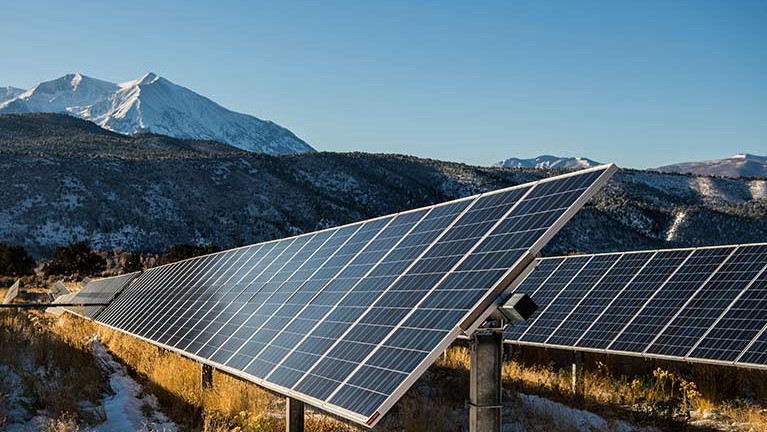A: Something everyone talks about, but no one does it?
Thanks to a regional gymnastics championship meet, we spent a long weekend in and around Denver, Colorado. It’s my first visit in almost 5 years (and our first trip ANYWHERE in over a year) and amid the fun and tourism, I saw several things that convinced me that Colorado has gotten very good at taking their lemons and making lemonade on the environmental front.
Solar panels are EVERYWHERE. On a great many suburban houses, toll booths, discrete power sources for highway cameras, etc., etc. The last-mile cost of the grid in a mountainous area has always been high, so being able to make that grid pay by stuffing electrons into that grid at many places makes sense. A friend who used to live in Highlands Ranch said that almost everyone in his neighborhood had super-low utility bills because of this. Granted, CO has higher utility costs than Oklahoma, so there’s more incentive to control costs. Reading a bit about it, many of the smaller electric companies there have adopted a “think big, start small” approach to getting comfortable with alternative power.
On the way across Kansas and Colorado, the previously stark prairie is now visually interesting via hundreds of windmills. Oklahoma is also getting in on the act: 22% of our PSO generation mix comes from wind, and in 2015 we were #4 in installed wind capacity. As part of the Southwest Power Pool, the total contribution of wind and solar to the mix as I write is over 40%.
Clearly, our very low power cost in Oklahoma is a blessing that contributes to our low cost of living, but every winter I remember the 2007 Ice Storm in Tulsa. Like a bit of PTSD, being without power for a whole week makes you jumpy every time the forecast calls for ice. Friends who had whole-home generators still had to make choices on what to keep on, and I find myself unable/unwilling to buy one of those things that pollute noisily in a pinch and yet become another maintenance item for that ONE TIME every few years that conditions require it.
In Oklahoma, I think we’ll see wind continue to make inroads in large-scale power generation, and solar will continue to gain ground at the micro or individual home level, where it will perhaps reduce one’s personal energy footprint and cost. Considering our history of rugged individualism, growing one’s own power is no different from growing one’s own food, and should be encouraged (legislatively) in the same way.
Canadian economist and energy analyst Vaclav Smil (Bill Gates is a fan-boy of his work) says that in order to truly fight climate change, individuals will need to be involved, and we need to return to our energy footprint of 1964:
“In the 1960s people didn’t have three-car garages, fly to Las Vegas to gamble or drive SUVs, but they lived comfortably,” says Smil. More importantly, they consumed 40 percent less energy than people today.
“We can return to 1964 with no problem. Living in 1964 is not a sacrifice.”
I have a friend in OKC who’ll be making the jump to solar power over the next year, and I’ll be watching his results closely. I think there’s a great advantage to the savvy builder who integrates solar into new homes from the start — even in our worst example of an ice storm, the weather turned quick enough back for the sun to supply one’s own electrical needs, if not in total then at least in part. Whereas a few large organizations have deployed solar as a part of their energy mix, the Shining Cities 2020 report shows that Oklahoma City at least is starting to gain some ground, made possible by regulatory easing.
I can imagine a not-too-distant future where every well-insulated, geothermal-heated and efficient home has it’s own solar plant, returning that home’s energy footprint to 1964 levels, with no loss of creature comfort. Your SUV and jetting off to Vegas is another story…
